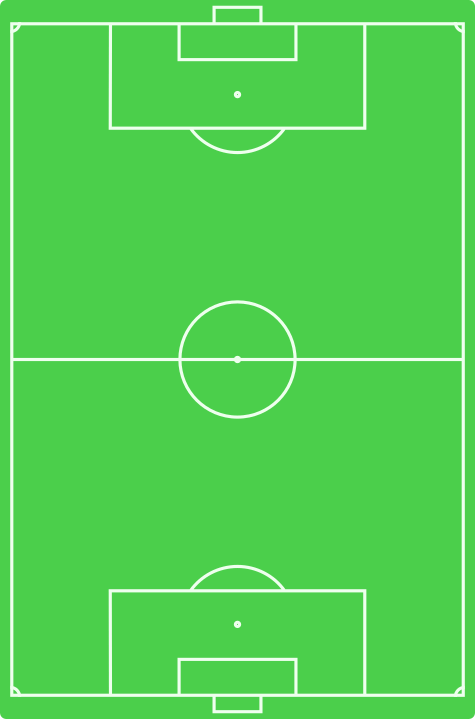Club Atletic Oradea
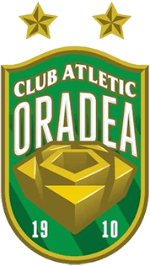 | |||
| Full name | Asociația Club Sportiv CAO 1910 Oradea[1] | ||
|---|---|---|---|
| Nickname(s) |
| ||
| Short name | CA Oradea, CAO | ||
| Founded |
25 May 1910 as Nagyváradi Atletikai Club 17 March 2017 as CAO 1910 Oradea | ||
| Ground | Iuliu Bodola | ||
| Capacity | 18,000 (11,155 seated) | ||
| Chairman | Florin Mal | ||
| Manager | Florin Farcaș | ||
| League | Liga IV | ||
| 2017–18 | Liga V, Bihor County, Seria I, 1st (promoted) | ||
| Website | Club website | ||
|
| |||
| Football | Basketball (Men's) |
Basketball (Women's) |
|---|---|---|
| Water Polo | Handball (Men's) |
Judo |
| Fencing | Athletics | Tennis |
Asociația Club Sportiv CAO 1910 Oradea, commonly known as Club Atletic Oradea (Romanian pronunciation: [ˌklub aˈtletik oˈrade̯a]), CA Oradea, or simply CAO, is an amateur Romanian football club based in Oradea, Bihor County.
The team was founded as Nagyváradi Atletikai Club in 1910, when Transylvania was part of Austria-Hungary. Over its history, CAO has won one Romanian national title, one Hungarian national title, and one Romanian national cup. It dissolved in 1963, but was reestablished in 2017 and commenced play in the fifth division.
The home ground of "the White and Greens" is the Stadionul Iuliu Bodola, which has a seating capacity of 11,155.
History
Early years (1910–1940)
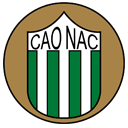
Nagyvárad (Oradea) in 1910 was a prosperous city in central Hungary, with a 90% Hungarian population. A commercial and transport hub, the city was an early hotbed of the game of football, which had arrived in 1902 with inhabitants returning from study or work abroad or in Budapest. The sport was gaining in popularity, but there was not yet an organised club to represent the town in matches against Kolozsvár (Cluj-Napoca) or Temesvár (Timișoara). Established in 1910, when Transylvania was still part of Austria-Hungary, Nagyváradi Atletikai Club - in Romanian: Club Atletic Oradea - will soon become the symbol of the football from Oradea. Its initials, NAC, then CAO, will require respect. The colors of the club were white and green. The constituent assembly was held on 25 May 1910, in the Emke Café, the board of directors being Dr. Emil Jonas, chairman, Béla Mikló, executive president, Andor Szabo, secretary, and Dr. Kálmán Kovács, cashier, and the affiliation to the Hungarian Football Federation was sought. On 31 July NAC played its first game, against the Kolozsvár (Cluj-Napoca) railway workers’ club KVSC, and in January 1912 a home ground was secured in Rhedey Park (where the zoo now stands). The next month, a touring team from England came to town: Bishop Auckland, the Northern League champions that season, beat NAC 8-0.
Before World War I, the club activated only on local and a regional level, they joined the eastern division of the Southern Hungarian League and in 1913 NAC won 25 of their 31 matches. In 1914, as champions of the division, NAC were entitled to participate in the national finals tournament in Budapest, but this competition never took place due to the outbreak of war in June.
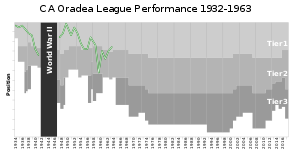
After the war, Transylvania became part of Romania, as the Great Union was declared and then ratified by the treaty of Trianon. Nagyvárad found itself 12 km beyond Hungary’s borders, and was now officially called Oradea, but the club and the city were still dominated by Hungarians. One of the most talented local players unearthed during this period was Elemér Berkessy (future FC Barcelona midfielder and Grimsby Town manager – in 1954 he became the first foreign manager in the English league).
Transylvanian teams joined the Romanian national championship in 1921-22, but NAC – now also known as Clubul Atletic Oradea – were beaten to the Oradea town title by Stăruința Oradea and then Înțelegerea Oradea for the first few seasons and thus did not qualify for the national finals until 1923-24. They beat Universitatea Cluj and Jahn Cernăuți, before defeat in the final by Chinezul Timișoara – who would win the first six Romanian titles after the Great Union.
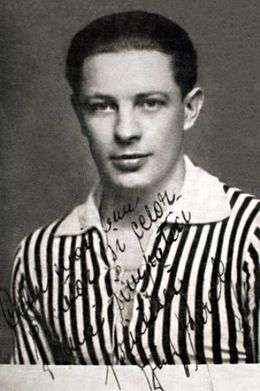
In 1932-33, after another spell confined to the regional tournament, CAO appeared in an expanded national competition, organised as two parallel leagues of seven teams; they finished second in their division, while local rivals Crișana Oradea came third in the other one. Two years later, with the national league reorganised into one division, CAO finished as runners-up, sandwiched between the two dominant clubs of the period, Ripensia Timișoara and Venus București. In 1938-39 the club was relegated to a restructured Divizia B, where they remained until the next war brought a strange upturn in fortunes.
In 1932, the management of the club decided that contact with football in other countries would help the development of the sport in Oradea. So they undertook a twelve-match tour in France and Switzerland, during which they beat Olympique Lillois, who would that season become inaugural French national champions, 5-2. The following year the tour was in France and its North African colonies, and Oradea was spreading its fame, and that of Romanian football, around the continent. During the interwar period CAO supplied eighteen Romanian internationals, the vast majority of whom were, incidentally, ethnic Hungarians, Jews and Germans.
Players who starred in CAO's green and white stripes in this period included: Ferenc Rónay, the first ever goalscorer for the Romanian national football team (against Yugoslavia in 1922); Nicolae Kovács, a forward who was one of only five men to play at the first three World Cups; Iuliu Baratky, a Hungarian from Oradea who opted to stay in Romania throughout the World War II, becoming a legend at Rapid București and Iuliu Bodola, a prolific goalscorer throughout the 1930s and into the 1940s. Thanks to the Bucharest chief of police’s misuse of funds for his club Venus București, Bodola was transferred to the capital in 1937.
The Romanian-Hungarian champion (1940–1963)
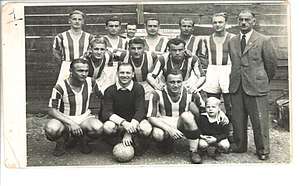
The Second Vienna Award in August 1940 annexed northern Transylvania, including Oradea, to Hitler’s ally Hungary, while Romania was in the throes of its own right-wing military dictatorship. Many footballers of German or Hungarian origin who were at clubs in Bucharest, Timișoara, Arad or other parts of Romania, crossed the new border into this region and joined clubs in Oradea (Nagyvárad) or Cluj-Napoca (Kolozsvár); many of them signed for CAO – now, once again, known officially by its Hungarian name, NAC. After one season back in a Transylvanian league, NAC were promoted to the Hungarian top division. They finished second in 1942-43 and then in 1943-44 they became the first team from outside Budapest to win the Hungarian championship in its 43-year history, finishing a huge 13 points ahead of the second placed team Ferencváros.
The players who helped the club to this historic achievement included some of the major Hungarian and Romanian footballers of the age:
Gyula Lóránt, from western Hungary, was only 20 years old during NAC’s title-winning season. He went on to play at Vasas, alongside László Kubala, who in 1949 fled the incoming Communist government and formed a team of Hungarian footballers who would play exhibition matches around western Europe. Lóránt tried to escape and join Kubala, but was captured and interred, until the national team coach secured his release. Lóránt played for Hungary from 1949 until 1955, encompassing the greatest period of Hungarian success: he played in central defence for the Aranycsapat, the Mighty Magyars of the early 1950s. Besides winning the Romanian championship with UTA Arad and three more Hungarian titles with Honvéd, Lóránt went on to coach Bayern Munich in the late 1970s.
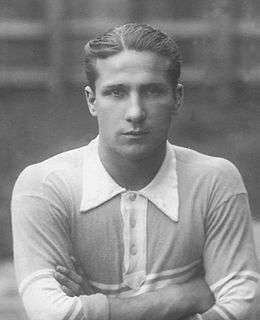
Iuliu Bodola or Gyula Bodola was an ethnic Hungarian born in what is now Brașov (then Brasso) in 1912. After a hugely successful seven-year spell as a prolific striker with CAO in the 1930s, and an equally fruitful three years at Venus București, he headed back to Oradea after the annexation of northern Transylvania by Hungary in 1940, and played for NAC for five years. After the war he moved to Budapest and represented MTK Budapest. During his years in Romania he played 48 times for the Romanian national football team, while from 1940 to 1943 he was a regular for Hungarian national football team. Remarkably, he held the Romanian international goalscoring record for 66 years, from 1931 until 1997, when Gheorghe Hagi overtook his total of 30 goals. The municipal stadium in Oradea is now named after him.
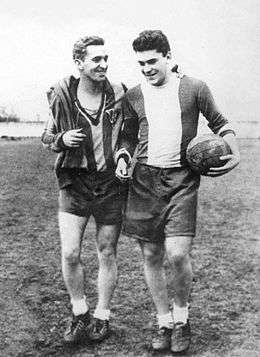
József Pecsovszky known in Romania as Iosif Petschovschi or simply ‘Peci’, was another young member of the successful NAC team and was capped by Hungary at the age of 21. An attacking midfielder from Timișoara, of Hungarian extraction, Peci would later become a hero in Arad due to his starring role in UTA‘s three league titles in the 1940s, and then won two further championships with CCA București in the 1950s. His first game for Romania was against Hungary in Budapest in 1945, alongside Spielmann and Simatoc; he scored, but Hidegkuti and Puskás scored two each in a 7-2 win for the Magyars. Pecsovszky is one of the all-time greats of Romanian football.
Francisc Spielmann, known in Hungary as Ferenc Sárvári, top-scorer for NAC in their title-winning season, with 23 goals; he was also the Hungarian player of the year.
The coach of the side throughout NAC’s Hungarian period was 1920s CAO hot-shot Ferenc Rónay.
Gusztáv Juhász, also spelled (in Romania) as Gustav Iuhași, had been a regular in midfield for the Romanian national football team since 1934, when he was also part of the CAO team that finished second in the Romanian championship. Together with Bodola and Rudolf Demetrovits/Demenyi, Juhász was part of the great Venus București team of the late 1930s.
Nicolae Simatoc, a reserve, was the only ethnic Romanian in the NAC squad; he was kept out of the starting line-up by the all-Timișorean midfield of Petschovschi, Demetrovits and Juhász. Simatoc, known as Miklós Szegedi in Hungary, would go on to spend one season alongside Kubala at FC Barcelona, as well as two years at Inter Milan.
The 1944-45 Hungarian season was abandoned after four games due to the movement of the front, and NAC never played in the Hungarian league again: the annexed region was occupied by Romanian troops in 1944 and awarded to Romania at the end of the war. NAC/CAO changed its name to Libertatea Oradea in 1948, and then to ICO Oradea the following year after the Soviet takeover of Romania. Petschovschi, Bodola and Ronnay left for Ferar Cluj – the third-placed team in Hungary in 1943-44 but also now returned to Romanian sovereignty – while five of the championship-winning team would form the core of a new dominant power in Romania, ITA Arad.
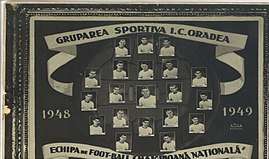
By 1948-49, only three players remained from the great NAC team of 1943-44. And yet ICO Oradea became Romanian champions. Gheorghe Váczi, a Hungarian who was capped by Romania, contributed 21 goals in 26 matches. They also had names such as Vécsey, Kovács II, Spielmann, Ion Vasile, Bodó, Zilahi, or Serfözö and the coach in that year was Nicolae Kovács, former CAO player and brother of the Ștefan Kovács who would coach Ajax to great success in the early 1970s.
As Progresul Oradea, the club won the Romanian Cup in 1956. After a brief period as CS Oradea, the name was changed to Crișana Oradea – extremely confusingly, because this had been the name of a completely different club in the town before the war. After yo-yoing between the top two divisions for a few years (Rónay returned as coach in 1962-63), in 1963 the club was dissolved. That same year another club from Oradea won promotion to the top division, Crișul Oradea, club which was mostly known as FC Bihor Oradea. The city of Oradea blazed brightly in the region’s football firmament, with some of Hungary and Romania’s greatest players of the age – one cup, and a league title in two countries – but it is now very much in the shadows: FC Bihor was dissolved on 12 January 2016 after a stormy history and in the spring of 2017 this dissolution subsequently realizing a strange reversed situation of the early 1960s.[2][3][4]
Refounding (2017–present)
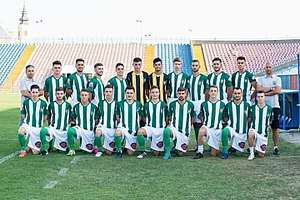
On 22 December 2016 CAO 1910 Association was founded, then on 17 March 2017 the association changed its status as a sports association named: Asociația Clubul Sportiv CAO 1910, thus marking the refoundation of the white and green team.[5]
The refounding of the club was followed by a marketing promotion period in which, among other things, the official website of the club and the Facebook official page were launched.[6][7]
Then on 28 July 2017 a partnership was signed between CAO and CSM Oradea, the team that took over the FC Bihor Oradea youth academy after its dissolution, but which did't have a senior squad, so through this partnership CSM Oradea ensured a continuity for the youth players at senior level and CAO assured a youth academy. In the same period the team was enrolled in Liga V.[8][9]
At the end of the first part of the season CAO had an impressive ranking line, 13 wins of 13, 70 goals scored and 10 conceded, 39 points, with 7 more than their main promotion rival, Dinamo Oradea.[10]
Grounds

The club plays its home matches on Iuliu Bodola Stadium from Oradea, a stadium with a capacity of 11,155, the biggest from Bihor County and named after Iuliu Bodola, CAO's great player of the 1930s and 1940s. Also the club uses Motorul Stadium for friendly matches and youth teams matches and trainings.
Support
Rivalries
CAO's bitter rivals are Ripensia Timișoara, but also has rivalries with teams like: UTA Arad or Politehnica Timișoara. In the past, CAO also had important rivals at the local level, matches against teams such as Stăruința Oradea or Crişana Oradea being recognized for their intensity.[11]
Youth program
CAO has formed its academy following the partnership signed with CSM Oradea, club which took over the youth academy of Bihor Oradea after its dissolution in 2016.[12]
Honours
Domestic
Leagues
- Liga II
- Winners (2): 1955, 1961–62
- Runners-up (1): 1938–39
- Liga V – Bihor County
- Winners (1): 2017–18
- Regional Championship
- Winners (2): 1924, 1925
Cups
Players
First team squad
- As of 15 September 2018
Note: Flags indicate national team as defined under FIFA eligibility rules. Players may hold more than one non-FIFA nationality.
|
|
Club officials
Board of directors
|
Current technical staff
|
Shirt sponsors and manufacturers
| Period | Kit manufacturer | Period | Shirt partner |
|---|---|---|---|
| 1910–1963 | Unknown | 1910–1963 | None |
| 2017– | 2017–2018 | None | |
| 2018– | Herald, MarClean |
Chronology of names
| Name | Period |
| Nagyváradi Atletikai Club (NAC) | 1910–1918 |
| Club Atletic Oradea (CAO) | 1918–1941 |
| Nagyváradi Atletikai Club (NAC) | 1941–1945 |
| Libertatea Oradea | 1945–1948 |
| Întreprinderea Comunală Orășenească Oradea (ICO) | 1948–1951 |
| Progresul Oradea | 1951–1958 |
| CS Oradea | 1958–1961 |
| Crișana Oradea | 1961–1963 |
| Club Atletic Oradea (CAO) | 2017–present |
Seasons
|
|
|
|
Notable former players
The footballers enlisted below have had international cap(s) for their respective countries at junior and/or senior level.
Notable former managers
References
- ↑ "Profil FRF-AJF" [FRF-AJF Profile] (in Romanian). Asociația Județeană de Fotbal Bihor. Retrieved 19 December 2017.
- ↑ "Istoria clubului" [Club history] (in Romanian). caoradea.ro. Retrieved 16 April 2018.
- ↑ "CA Oradea" [CA Oradea] (in Romanian). romaniaballs.wordpress.com. Retrieved 16 April 2018.
- ↑ "Povestea singurei echipe care a câştigat titlul în Ungaria şi România şi a unei prietenii româno-maghiare vechi de şase decenii" [The story of the only team that won the title in Hungary and Romania and a six decades old Romanian-Hungarian friendship] (in Romanian). prosport.ro. Retrieved 16 April 2018.
- ↑ "Statutul clubului" [Club status] (in Romanian). caoradea.ro. Retrieved 16 April 2018.
- ↑ "S-a reînființat singura echipă care a câștigat titlul atât în Ungaria, cât și în România! Ce planuri are, cine o conduce + Sponsor inedit" [The only team that has won the title in Hungary and Romania has been re-established! What plans does it have, who leads it + Unusual sponsor] (in Romanian). gsp.ro. Retrieved 16 April 2018.
- ↑ "Se refunda en Rumanía un club histórico que ganó las ligas húngara y rumana" [A historical club that won the Hungarian and Romanian leagues is re-founded in Romania] (in Spanish). marca.com. Retrieved 16 April 2018.
- ↑ "Oradea are echipă de fotbal! CSM şi CAO 1910 şi-au făcut formaţie de seniori şi au înscris-o în Liga a V-a" [Oradea has a football team! CSM and the CAO 1910 formed a senior squad and entered it in the League 5] (in Romanian). ebihoreanul.ro. Retrieved 16 April 2018.
- ↑ "Pentru că brandul FC Bihor e prea scump, primăria Oradea reînvie legendara CAO, singura echipă care a câştigat titlul în Ungaria şi România. Primul obiectiv: promovarea" [Because FC Bihor brand is too expensive, Oradea Municipality revives the legendary CAO, the only team that won the title in Hungary and Romania. First objective: promotion] (in Romanian). liga2.prosport.ro. Retrieved 16 April 2018.
- ↑ "Liga 5. Etapa 13 (ultima a turului): Progresul Sâniob acumulează primul punct! CAO: 13 din 13" [Liga 5. Stage 13 (last round): Progresul Sâniob accumulates its first point! CAO: 13 out of 13] (in Romanian). bihorpenet.ro. Retrieved 16 April 2018.
- ↑ "Echipe din România interbelică – CAO. Oradea, campioana româno-maghiară" [Teams in interwar Romania - CAO Oradea, the Romanian-Hungarian champion] (in Romanian). ripensia-sport-magazin.ro. Retrieved 16 April 2018.
- ↑ "CSM Oradea a preluat grupele de copii ale FC Bihor şi vrea să cumpere brandul clubului" [CSM Oradea took over FC Bihor's youth academy and wants to buy the club's brand] (in Romanian). ebihoreanul.ro. Retrieved 16 April 2018.
External links

- Official website
- Club Atletic Oradea on Facebook
- Club Atletic Oradea on Instagram
